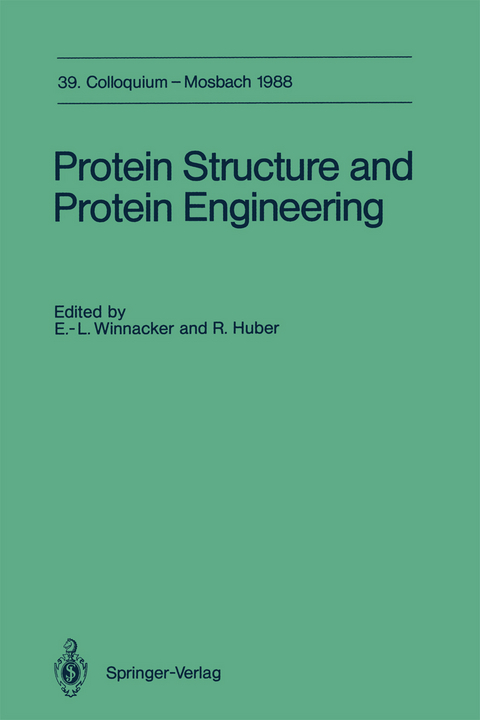
Protein Structure and Protein Engineering
Springer Berlin (Verlag)
978-3-642-74175-3 (ISBN)
Robert Huber, 1972 in der Schweiz geboren, studierte Fotografie an der Schule für angewandte Künste in Vevey. Seit 1995 ist er Mitglied der Fotografenagentur Lookat. In seinen farbigen Mittel-und Großformatfotos richtet er seine Aufmerksamkeit auf Themen heutiger Freizeitkultur. Seine Arbeiten sind u.a. im New York Times Magazine, im Time Magazine und in der du erschienen. 1998 traf er in der Joop Swart World Press Masterclass Stefan Vanfleteren. Er lebt in New York.
How Does ATP Make Work?.- Hydrophobic Interactions in Proteins.- Is There a Code for Protein Folding?.- The Method of Protein Structure Determination by NMR in Solution: Initial New Insights Relating to Molecular Mobility.- A Calculated Conformation for the Folding Transition State of Bovine Pancreatic Trypsin Inhibitor.- Conformational Entropy and Protein Stability.- The Improvement of Catalytic Effectiveness of an Enzyme: Pseudorevertant Triosephosphate Isomerases Obtained by Random Mutagenesis of Catalytically Sluggish Mutants.- Reaction Coordinate Approach to the Binding of Ligands to Carboxypeptidase A.- The Specific Interaction of Human Leukocyte Elastase with Various Protein Inhibitors.- The Interplay Between Enzyme Mechanism, Protein Structure, and Inhibitor and Catalyst Design.- Evolution of Hemoglobin as Studied by Protein Engineering and X-Ray Crystallography.- Design and Construction of Biologically Active Peptides and Proteins Including Enzymes.- Computer Modeling with a Protein Data Base.- Automated and High-Speed DNA Sequencing - Computer Technology Promotes Biological Advances.- Synthetic Antibodies with a Known Three-Dimensional Structure.
| Erscheint lt. Verlag | 3.10.2013 |
|---|---|
| Reihe/Serie | Colloquium der Gesellschaft für Biologische Chemie in Mosbach Baden |
| Zusatzinfo | XI, 131 p. |
| Verlagsort | Berlin |
| Sprache | englisch |
| Maße | 170 x 244 mm |
| Gewicht | 268 g |
| Themenwelt | Naturwissenschaften ► Biologie ► Biochemie |
| Naturwissenschaften ► Biologie ► Zellbiologie | |
| Technik ► Umwelttechnik / Biotechnologie | |
| Schlagworte | ATP • Base • DNA • DNA sequencing • enzymes • Mutagenesis • Protein • Reaction |
| ISBN-10 | 3-642-74175-4 / 3642741754 |
| ISBN-13 | 978-3-642-74175-3 / 9783642741753 |
| Zustand | Neuware |
| Haben Sie eine Frage zum Produkt? |
aus dem Bereich


